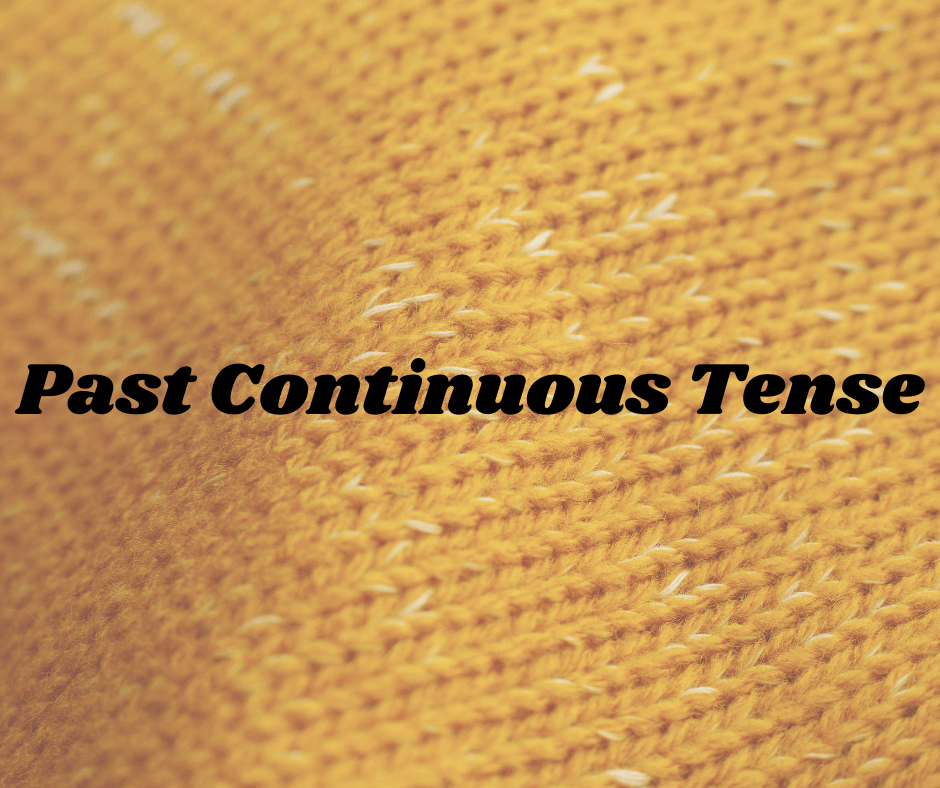Past Continuous Tense की अवधारणा (Concept of Past Continuous Tense)

Overview
इस लेख में हम अंग्रेजी के एक महत्त्वपूर्ण अध्याय के बारे में जानेंगे - Past Continuous Tense की अवधारणा, in Hindi (हिंदी में)
 नोट
नोटइस अध्याय से सम्बंधित, अन्य विषयों के बारे में जानने के लिए आप हमारे निम्नलिखित लेख पढ़ सकते हैं:
इस लेख में, हम Past Continuous Tense (पास्ट कंटीन्यूअस टेन्स) की अवधारणा, इसके विभिन्न उपयोगों और इस tense का उपयोग करके बनाई जाने वाली विभिन्न वाक्य संरचनाओं के बारे में अध्ययन करने जा रहे हैं।
Past Continuous Tense के उपयोग
उपयोग 1: अतीत में किसी समय पर चल रही कार्रवाई (Action going on at some time in the past)
अतीत में किसी समय चल रही किसी क्रिया को इंगित करने के लिए हम Past Continuous Tense का उपयोग करते हैं (कार्रवाई का समय इंगित हो भी सकता है और नहीं भी)।
The noise was getting louder.
We were watching the kids all night.
tenses
उपयोग 2: अस्थायी स्थिति (Temporary situation)
Past Continuous Tense का उपयोग किसी अस्थायी स्थिति (temporary situation) के बारे में बात करने के लिए किया जाता है, जो अतीत में किसी विशेष समय पर या उसके आसपास मौजूद थी:
During the time of the great depression, people were fighting even for bread and butter.
Ronaldo was not playing well, so he was substituted.
उपयोग 3: न छूटने वाली आदतें (Persistent habits)
अतीत में न छूटने वाली आदतों को प्रदर्शित करने के लिए भी always, continually, आदि के साथ Past Continuous Tense का उपयोग किया जाता है।
He was always gambling.
 नोट
नोटअतीत में चल रही गतिविधि - यह Past continuous tense में होगी
बाधित क्रिया (Interrupted action) - यह Simple past tense में होगी
I was having a bath when somebody knocked at the door.
Tom was passing through the forest when a tiger jumped at him.
Past Continuous tense की विभिन्न वाक्य संरचनाएं
हम Past Continuous tense में निम्नलिखित सहायक क्रियाओं (helping verbs) का उपयोग करते हैं (subject के पुरुष और संख्या के आधार पर):
tenses
 नोट
नोटयह आवश्यक नहीं है कि 'was/were' हमेशा सहायक क्रियाओं (helping verbs) के रूप में काम करेंगे। वे मुख्य क्रियाओं (main verbs) के रूप में भी कार्य कर सकते हैं।
 नोट
नोटकाल्पनिक वाक्य में, 'were' का प्रयोग सभी subjects के साथ किया जाता है (चाहे वह सहायक क्रिया या मुख्य क्रिया के रूप में प्रयोग किया गया हो)।
I wish, I were a lion. (were – main verb)
She pretended as if she were hallucinating. (were – helping verb)
घोषणात्मक वाक्यों की संरचना (Structure of Declarative sentences)
सकारात्मक घोषणात्मक वाक्य (Affirmative Declarative Sentences)
पैटर्न: Subject + was/were + + Object
Aanya was playing badminton.
They were playing badminton.
नकारात्मक घोषणात्मक वाक्य (Negative Declarative Sentences)
पैटर्न: Subject + was/were not + + Object
Aanya was not playing badminton.
They were not playing badminton.
 नोट
नोटहम was not / were not को wasn't/weren't भी लिख सकते हैं|
प्रश्नवाचक वाक्यों की संरचना (Structure of Interrogative sentences)
सकारात्मक प्रश्नवाचक वाक्य (Affirmative Interrogative Sentences)
पैटर्न 1: Was/Were + Subject + + Object?
Was Aanya playing badminton?
Were they playing badminton?
पैटर्न 2: Wh. family + was/were + Subject + + Object?
Where was Aanya playing badminton?
Where were they playing badminton?
नकारात्मक प्रश्नवाचक वाक्य (Negative Interrogative Sentences)
पैटर्न 1: Was/Were + Subject + not + + Object?
Was Aanya not playing badminton?
Were they not playing badminton?
पैटर्न 2: Wh. family + was/were + Subject + not + + Object?
Why was Aanya not playing badminton?
Why were they not playing badminton?

अतिरिक्त पुस्तकें और उपकरण
यदि आप किताबों के माध्यम से सीखना पसंद करते हैं, या संदर्भ उद्देश्यों के लिए कुछ अच्छी अंग्रेज़ी व्याकरण किताबें चाहते हैं, तो आप हमारा यह लेख पढ़ सकते हैं|